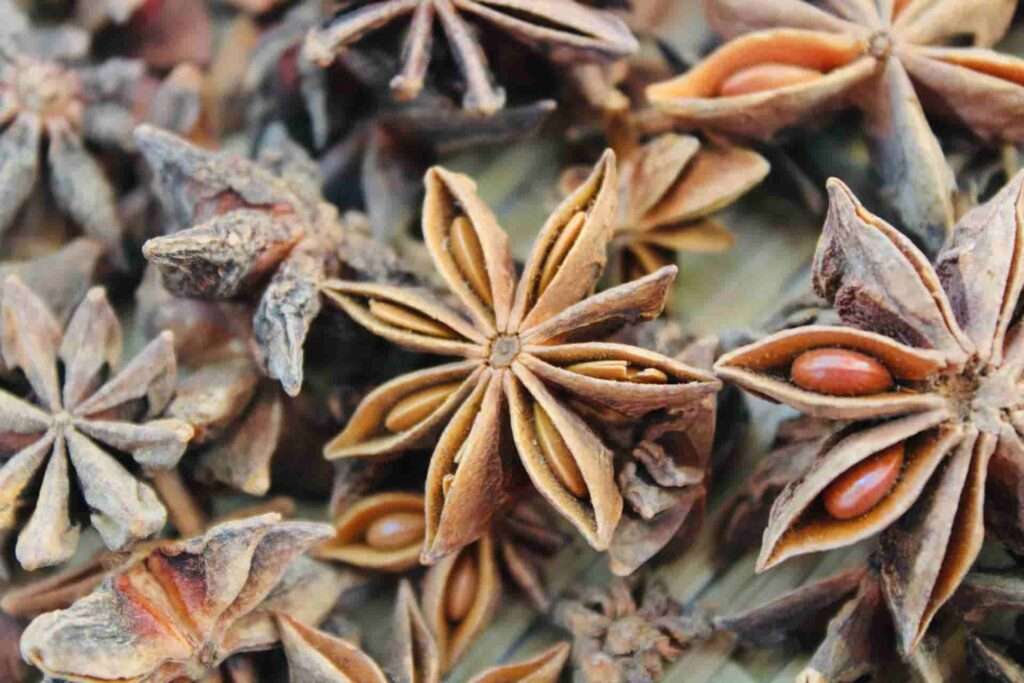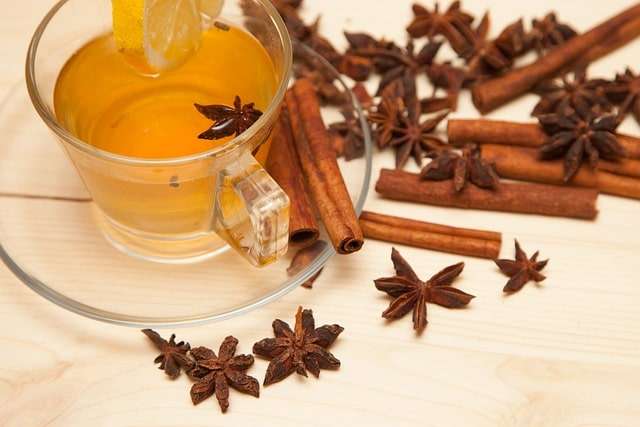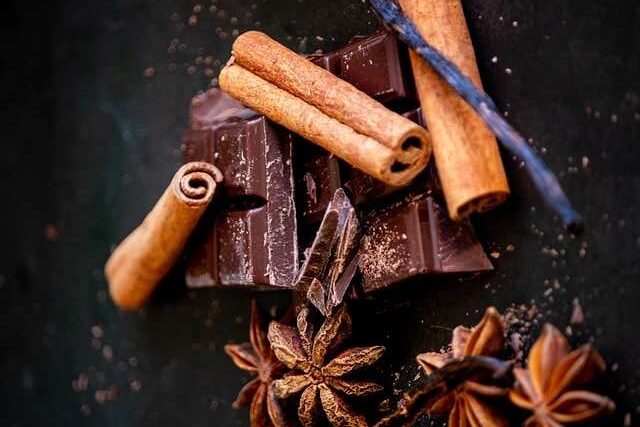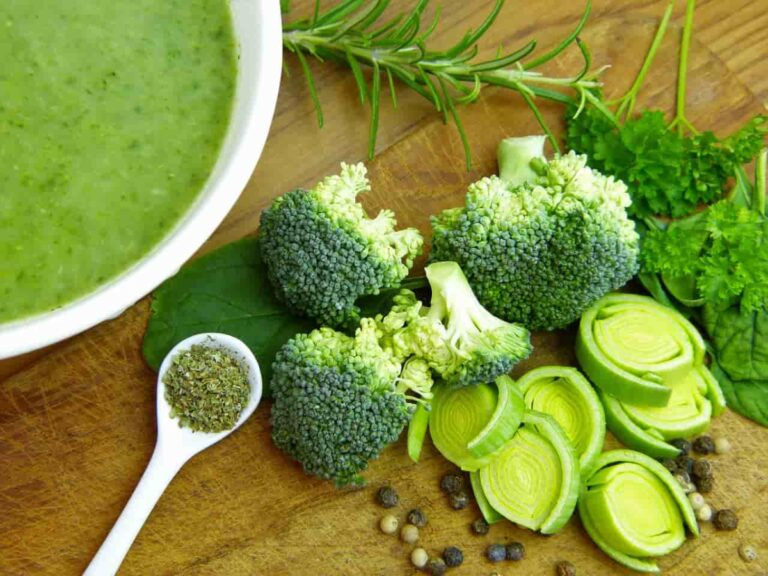33 top star anise kitchen insights and benefits
Did you know that the plant that produces star anise is an important part of the culture of the Chinese people?
- This is due to the fact that, in addition to its usage in culinary applications, it is also an ingredient in a variety of medicinal concoctions. It is said that the seed pod has the capacity to warm the body from the inside out because to its very sweet and pleasant licorice flavor. The use of star anise may be beneficial to both the digestive system as well as the respiratory system.
- Anise and star anise are not linked to one another in any way, despite their names. Both types of plants include anethole, which is the component that gives these two kinds of spices their distinctive taste. In comparison to anise, star anise is more potent, somewhat bitter, and far less expensive.
- It is important not to mistake Chinese Star Anise with Japanese Star Anise, which is similar but derives from a distinct tree. Chinese Star Anise is utilized in a variety of industries, including the food and pharmaceutical industries. Even though it is considered to be dangerous and should not be swallowed, Japanese Star Anise is often used in aromatherapy and as an ingredient in incense.
- It is believed that people in Vietnam and Southern China have been using star anise for culinary purposes and as a medicinal remedy for more than 3,000 years. Before a British sailor in the late 1600s found it in the Philippines, most of the spice’s use took place inside the Asian area. Sir Thomas Cavendish was the explorer who brought the spice back to England and wrongly identified the Philippines as the country of origin for the spice. The spice became very well-known very fast and, throughout the course of the 18th century, made its way to Russia and Germany via tea channels.

Star anise’s nutrition values and health benefits
- In addition to a sizable amount of iron, star anise has a wide range of antioxidants. These include linalool, quercetin, thymol, terpineol, caffeic acid, anethole, kaempferol, and coumaric acid. Also has small amounts of other nutrients, including calcium, potassium, and magnesium in addition to vitamin C. There are several possible health benefits to star anise due to its high content of active compounds and organic acids, including shikimic acid, lipids, and dietary fiber.
- They may have anti-cancer, anti-fungal, anti-respiratory, anti-fungal, immune-enhancing, digestive-enhancing, circulation-improving, and sleep-facilitating properties. These putative benefits are among the most prominent of the health benefits associated with star anise.
- Due to its high antioxidant content, it may help the body rid itself of free radicals, including those that may lead to oxidative stress in the skin. This may help to smooth out fine lines and wrinkles, make the skin more pliable, and hide scars and other imperfections, all of which are important for keeping the skin looking young and healthy.
- It is well known that star anise has been extensively researched due to its antibacterial characteristics and that this spice has been used for centuries to treat stomach and other bacterial infections. This seasoning’s potential against several antibiotic-resistant bacterial strains makes it an attractive commodity in the pharmaceutical industry. This is perhaps the most important possible use for it.
- In particular, anise is useful for promoting healthy respiratory function. Drinking some anise tea at the first sign of a cold or flu may be all it takes to reduce inflammation and neutralize the underlying infection before more severe symptoms develop, such as a cough or sore throat.
- Antioxidant levels and magnesium concentration are likely responsible for the spice’s calming effects, according to research. Several investigations have uncovered these characteristics. This spice may aid those who suffer from insomnia or whose sleep patterns are often interrupted by increasing the release of certain neurotransmitters that create calm and sleep.
- One tablespoon of these small fruiting bodies contains around 13 percent of the daily required quantity of iron, making star anise a particularly good source of this mineral. You probably won’t eat a whole tablespoon’s worth of these fruits, but their high iron content may still increase your body’s synthesis of red blood cells. By ensuring that the body’s extremities get the oxygen they need, this may boost energy levels.
- For generations, people have turned to this specific spice because of its powerful anti-fungal properties in the treatment of a broad range of fungal infections including athlete’s foot, ringworm, Candida, and other common strains. Most fungal infections are not life-threatening, but if you drink star anise tea every day, your immune system may get the boost it needs to fight them off.
- The fruits of the anise plant are traditionally eaten after meals to aid with digestion, and anecdotal evidence shows that the plant itself is a powerful digestive aid. It also helps enhance the bacterial balance in your stomach, which results in better nutritional absorption and may reduce bloating, gas, and cramps.
- Star anise has been the focus of much study for its possible impact on hormone levels in both men and women. While it may offer men more energy and enhance their libido, it may also help women with their periods by stabilizing their hormone levels and minimizing the emotional ups and downs that come with menstruation. It may give men a burst of energy and enhance their libido.
100g of Star anise has 337 calories (1410 kJ), 18 g of protein, 16 g of fat, and 50 g of carbs, including 15g of fiber.

How to store star anise and how to buy them
- When choosing star anise, it is crucial to analyze the quality of the spice as well as its level of freshness to guarantee that you are obtaining the greatest possible taste and scent. The following are some guidelines that might assist you in evaluating the quality of star anise:
- Examine the pods first to determine their general look. They should not have any cracks or other signs of fracture and should be whole. While using fresh anise, the color should be a deep forest green; while using dried star anise, the color should be a dark chocolate brown.
- It ought to exude an aroma that is strong, cloying, and reminiscent of licorice. Avoid using star anise that has a musty or stale odor, since this indicates that it may have lost some of its efficacy.
- The consistency of the anise pods is yet another essential aspect to take into consideration. When you touch them, they should feel hard but still somewhat malleable. Avoid using star anise that has a very dry or brittle texture, since this might be a sign of low quality or old age.
- Last but not least, before you buy any star anise, try tasting a very little piece of it first. It should have a taste that is powerful and unique, with a sweetness that lingers after each bite. Steer clear of star anise that has a taste that is too mild or that is missing the licorice flavor.
- There are two different ways to preserve star anise: first, in the form of seeds, and second, in the form of leaves. Both versions may be kept in the pantry at room temperature for as long as necessary. It will remain edible for a whole year.
- Because it comes from the same family as other spices, star anise is susceptible to going bad when exposed to dampness. Because of this, you should keep star anise in an airtight container away from any source of moisture. Put it in a container that doesn’t let air in or a bag that you shut up completely so it won’t get wet.
- It is important to remember that star anise and other spices may get rancid if they are exposed to direct sunlight for an extended period of time, so you should always keep them in a cool, dark spot. The star anise may get overheated when exposed to sunlight, which is not ideal for them and will ultimately shorten their lifespan.
- When we speak about the leaves of star anise, we should also mention that you can keep the leaves in the refrigerator to preserve them from moisture and prevent them from losing their scent. Put the unwashed leaves in the plastic bag, close it up, and store it in the refrigerator. In a couple of weeks, it will begin to lose its perfume, but if you leave it at room temperature, the aroma will disappear in a couple of days.
- After a given amount of time, the flavor of anything may deteriorate or become unpleasant. If you purchase star anise from the shop, the package will include a label with the expiry date on it. There is no expiration date for star anise as there is for fruits and vegetables; nevertheless, there are several signs that might tell you whether your star anise has spoiled or is no longer edible.
- Smell: You may use your nose to feel the distinct perfume of star anise; if you detect any change in the aroma, or simply if there is no aroma coming out of your star anise, it indicates that your star anise has expired.
- When discussing the leaves of star anise, it is important to note that after a given amount of time, if they are not stored in the appropriate circumstances, they might lose their perfume and taste. The texture of the ruined leaves will ultimately become more brittle, and they will finally wilt.

Cooking techniques, secrets, and tips from the kitchen
- One of the best ways to enjoy the distinctive taste and perfume of star anise is to infuse it in drinks. This method is a fun and flavorful way to spice up your next broth, sauce, or drink. Add star anise, either whole or crushed, to your preferred beverage (water, broth, or alcohol) and let it soak for the desired amount of time. If you steep it for a longer period of time, the taste will intensify. Adding star anise infusion to homemade chai tea is a common practice. You may make a stimulating hot drink by boiling star anise with other fragrant spices like cinnamon, cardamom, and cloves.
- Star anise may be a game-changer when it comes to blending spices. Its particular taste character makes it a flexible addition to your culinary arsenal, adding depth and complexity to any combination. Chinese Five Spice is a popular combination that includes star anise. This fragrant mixture strikes a nice balance between sweet, savory, and somewhat spicy thanks to the use of star anise and other spices like cinnamon, cloves, fennel seeds, and Szechuan peppercorns. It’s also great for making your own curry powder, garam masala, or even barbecue rub.
- Star anise is an underappreciated ingredient that may greatly improve the flavor of marinades and rubs. Its robust and fragrant taste profile may elevate even the most basic marinade to gourmet status. Crushing or grinding the entire star anise pods is the first step in adding their flavor to marinades. Use it as part of a marinade for pork, poultry, or even tofu by mixing in other ingredients like soy sauce, garlic, ginger, and citrus liquids. The star anise imparts its distinctive flavor to the protein throughout the marinating process, making for a flavorful and delicate main course.
- Star anise is a versatile spice that can transform bland soups and stews into savory masterpieces. Those familiar flavors get a wonderful new spin from its fragrant and subtly sweet flavor. Soups and stews greatly benefit from the addition of star anise, either in the form of whole pods or powdered powder. Star anise adds depth and complexity to the flavor as it permeates the other ingredients. It is excellent with meats, mushrooms, root vegetables, and other hearty foods. Vietnamese Pho, a flavorful noodle soup, is a classic example.
- Although star anise is most often used in savory applications, it also works well in sweets. Infusing baked goods with a touch of warmth and spice, its distinctive taste is a welcome addition. Infusing milk or cream with star anise is a common technique for using the spice in baking. Adding star anise to the liquid and heating it will enable the spice to steep and flavor the drink. This infused liquid may be added to desserts like custards, puddings, and ice creams for a unique flavor.
- Star anise and cinnamon are a well-liked pairing. The licorice-like flavor of star anise provides a nice contrast to cinnamon’s warm and sweet undertones. These two ingredients go hand in hand in many spicy cake, cookie, and pie recipes. Star anise and cloves are another great flavor combination. Both spices are fragrant, and when combined, they provide a rich scent and taste. This mix lends a warm and welcoming flavor to mulled wine and spiced teas, making them perfect for the holiday season.

The history of Star anis from the beginning until today
- It is thought that the people of Vietnam and Southern China have been making use of star anise for culinary reasons as well as a medical cure for more than 3,000 years.
- The spice was mostly used and valued inside the Asian region prior to the late 1600s, when an English sailor discovered it in the Philippines. Before that time, it had primarily circulated within the region of Asia. Sir Thomas Cavendish, an adventurer, was the one who brought the spice back to England. Cavendish, who had the mistaken belief that the spice originated in the Philippines, was the one who brought back the spice.
- The seasoning gained a significant amount of notoriety very quickly and, all during the course of the 18th century, found its way to Russia and Germany by means of the tea trade. In future years, European colonists transported this spice to the New World, where they discovered that it was beneficial both as a medication and in the confectionery business. They also realized that it had a sweet flavor.
- At the moment, the most important producers of star anise are China, Vietnam, Thailand, and Japan. It may be difficult to get seedpods in the shape of a star at typical grocery stores, but you have a far better chance of finding them in spice shops and restaurants that specialize in Asian or Indian cuisine.
- Star anise has a highly prominent role in Chinese culture due to the fact that it is not only used as a flavoring in cuisine but also as a component in traditional Chinese medicine. It is said that the seed pod has the capacity to warm the body from the inside out because of its very sweet and pleasant licorice flavor.
- In Indian cooking, star anise is a popular component, and you may find it in a number of spice combinations, such as garam masala and chai. In the cuisine of Vietnam, the spice is an integral part of the process of creating the signature broth for the soup known as pho.
- The spice is used most often in the confectionery, bread, and cake preparations of Western cuisines. Additionally, it is utilized in the production of alcoholic drinks including Absinthe, Sambuca, and Ouzo.







